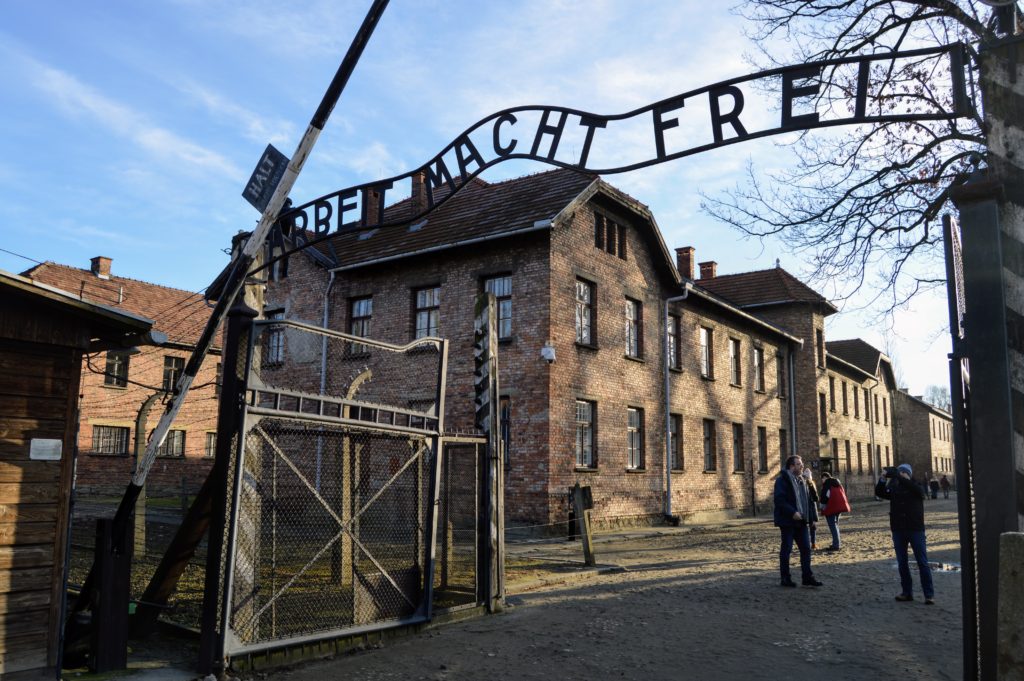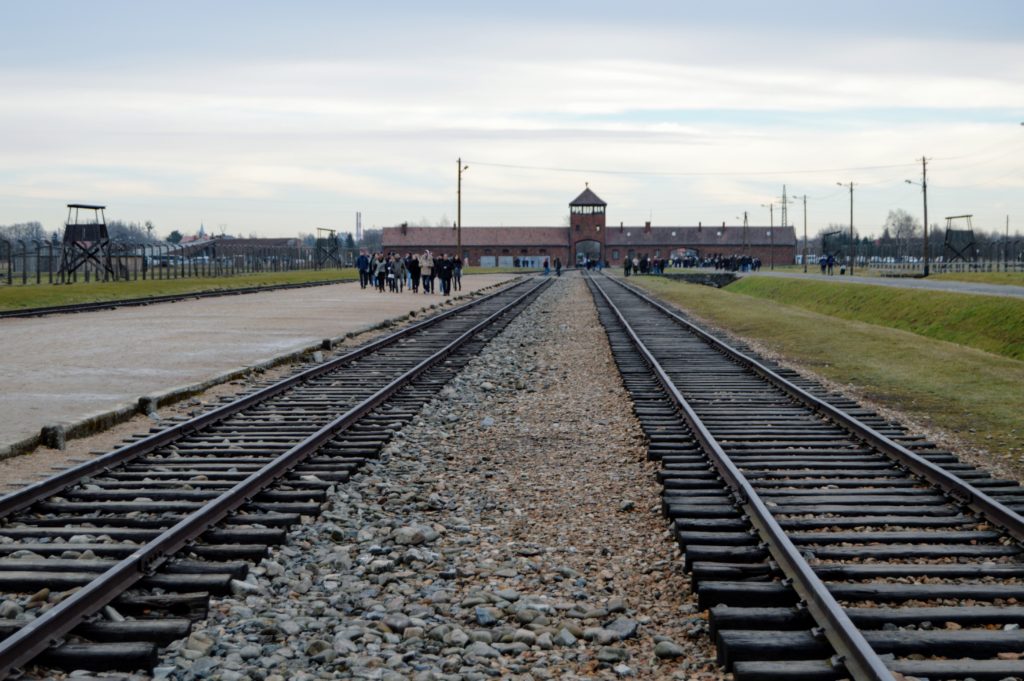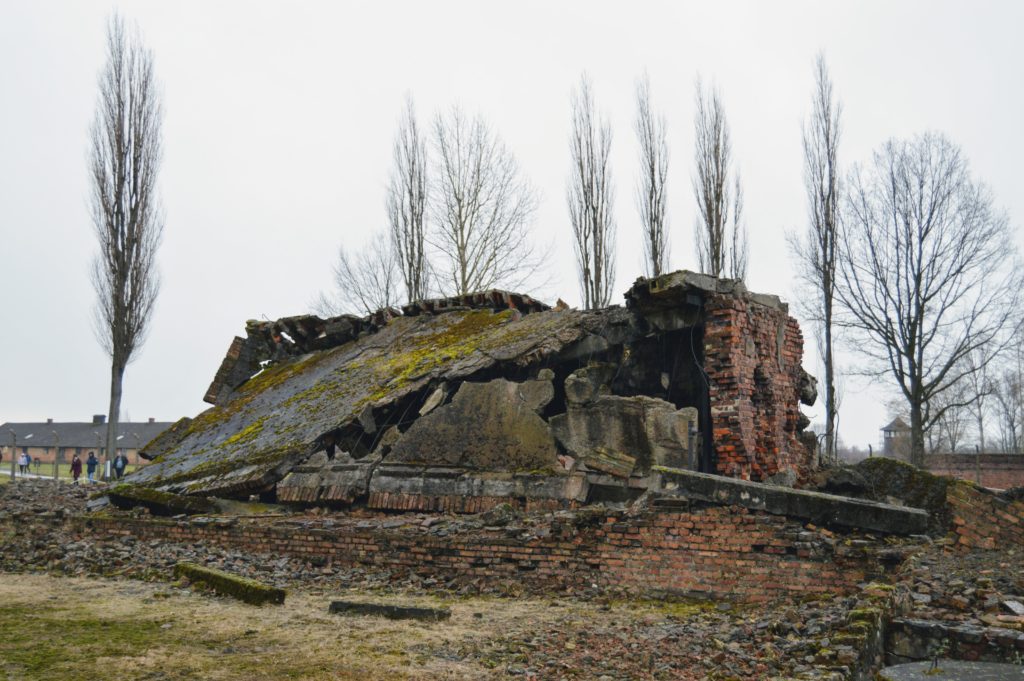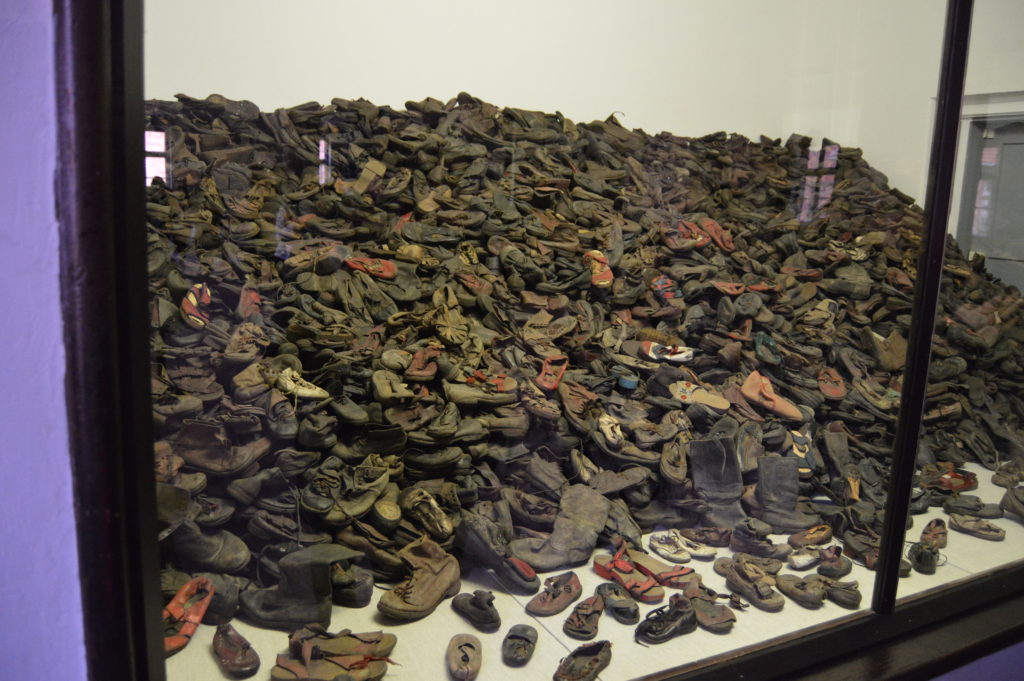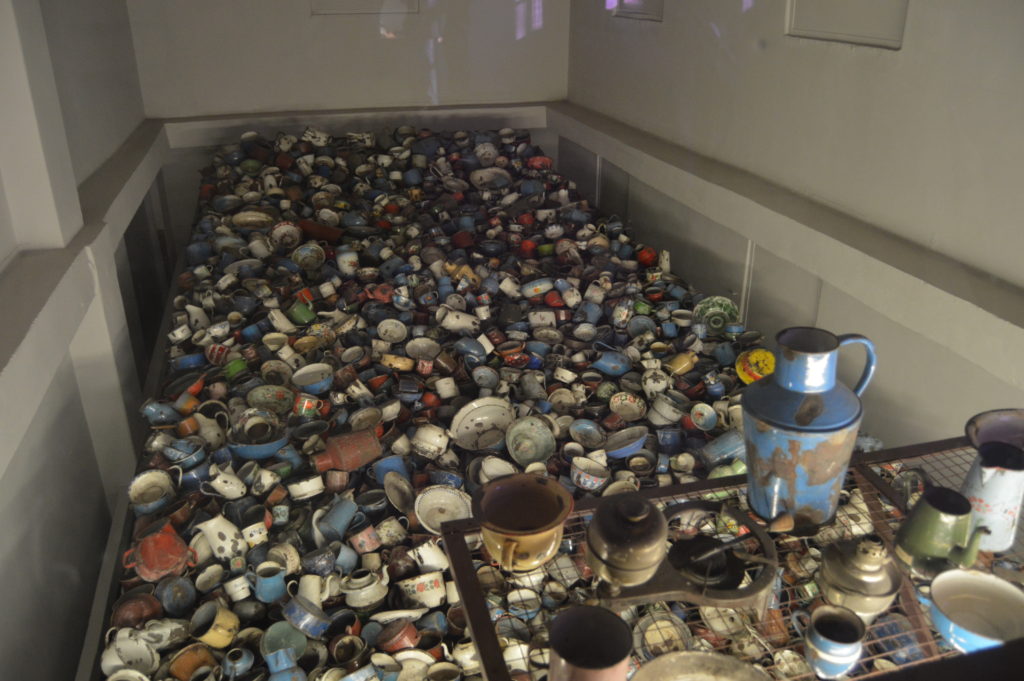Auschwitz: Camp of Death
Stepping through the infamous gates of Auschwitz, the pall of gloom and oppression falls over you in an almost physical way. The words over the gate, ARBEIT MACHT FREI, meaning “work sets you free,” cast a mocking eye over the rows of austere brick buildings used to house those lucky enough to be sentenced to slave labor rather than immediate extermination. The once-electrified double barbed wire fence encircling the facility cuts a harsh perimeter in a clear separation of the world outside and the one within.
Between 1940 and 1945, 1.3 million people were sent to Auschwitz, 1.1 million of whom died there, accounting for 1 in 6 of the Holocaust’s victims. Though originally used for Polish prisoners, eventually Jews and other undesirables were sent to the camp from all over German-occupied Europe, from as far away as Greece. They were generally shipped in cattle cars so overcrowded that there was no room to sit down. Lasting as long as ten days with no provided food or water, the journey itself was enough to kill many of the weaker prisoners. Upon arrival to the camp, they were lined up and inspected one-by-one by the camp doctor. Based on their appearance and little else, they were sent to one of two lines. The first was for those deemed able to work, to be sent to the labor camp. The second was for anyone too weak to be useful — often women, the elderly, and children; those in this line were sent away for immediate extermination. The second line was generally much longer than the first.
It’s hard to say whether the people chosen for the work camps were better off than the others. Our guided tour of the complex was a somber one. We saw the cramped sleeping rooms where dozens of workers would sleep shoulder-to-shoulder on the cold concrete floor. We saw the roll call area where the prisoners were forced to stand for six to eight hours a day in freezing weather so they could all be accounted for. We saw the mass graves where those for whom the single meal of thin vegetable soup per day wasn’t enough were dumped. We saw the execution wall where dissidents were shot in the back of the head.
The most chilling part of the tour, and probably the most haunting place I’ve ever been, was one of the actual gas chambers used to exterminate hundreds of thousands of people. Though the larger ones were destroyed by the Nazis in an attempt to hide their crimes, the original is still intact and has been untouched since its use. Those slated for death were led to the chamber, being told they needed to take a shower. They were forced to undress completely, so that the clothes could be reused, and filed into the chamber, which was then sealed. The poison, Zyklon B, was dumped into the room via a shaft on the roof, which would fill the room with lethal gas, killing everyone inside. Horrifically, the poison took up to 20 minutes to work, leaving the victims in extreme pain for all that time. The bodies were then cremated.
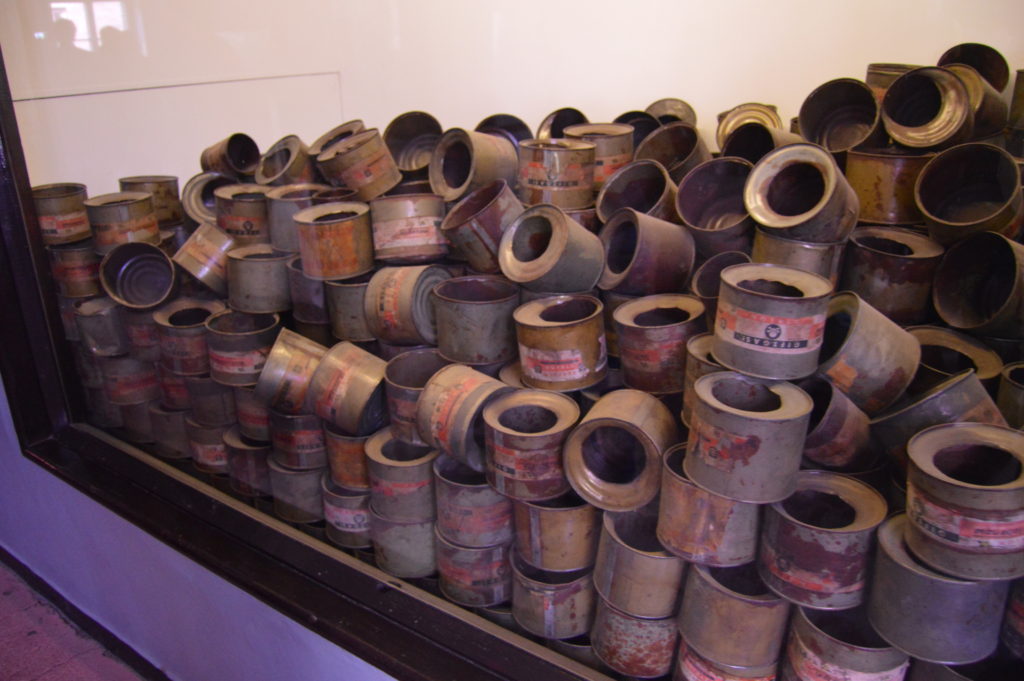
Empty canisters of Zyklon-B, the poison used in the gas chambers. Each canister killed over a thousand people.
The sheer scale of the complex is mind-boggling, sitting on over 15 square miles of land. One of the most striking aspects of Auschwitz is how impressive it is, in a horrifying, inhuman kind of way. The Nazis practiced murder on an industrial scale, shipping in thousands of people daily, stripping them of their belongings, and exterminating 90% of them. Being told they were to be resettled in the camp, many people brought their essential belongings and valuables to provide for their families in their new home. Whether sent to work or the gas chambers, all of these belongings were seized by the Nazis and used or stored to provide for the German army. Various collections of these items were on display, and though the piles of clothing, luggage, and household goods were enormous, we were told that what we saw was only the tip of the iceberg.
I don’t think I’ll ever forget the feeling of walking through Auschwitz. It’s like stepping into some dystopian alternate universe, except it’s one that actually happened. Following the path from the train tracks to the gas chambers, along the road that hundreds of thousands of people walked down in their final hours, staring off into the bleak woods that were the last thing so many saw, I felt for the first time in my life like there might, just maybe, be ghosts around. The weight of that history presses down on you in an almost tangible way.
Auschwitz is the closest I think I’ve ever come to witnessing pure evil. One of the most important parts of traveling, for me, is learning about both sides of controversial issues and realizing that neither side is totally right or wrong, and most conflicts are made up of good people just trying to do their best in the situation in which they find themselves. The Holocaust, however, is not one of those issues. The atrocities committed by the Nazis are almost unimaginable, and the level to which millions of people were dehumanized and discarded is something the entire world should be horrified by.
Towards the end of our tour, the guide stressed that while it’s easier on the conscience to think of Nazis as this horrible other group, it’s important to realize that they were just people like any of us. Swept up in a furor of hatred, anger, fear, and the desire to find someone to blame, ordinary people went on to commit crimes against humanity on an unprecedented scale. And since it was done by people once, it can be done by people again. It’s our responsibility to ensure that no matter what happens in the world, how afraid or angry we get, or who we feel is to blame for our troubles, we never let anything like this ever happen again.

